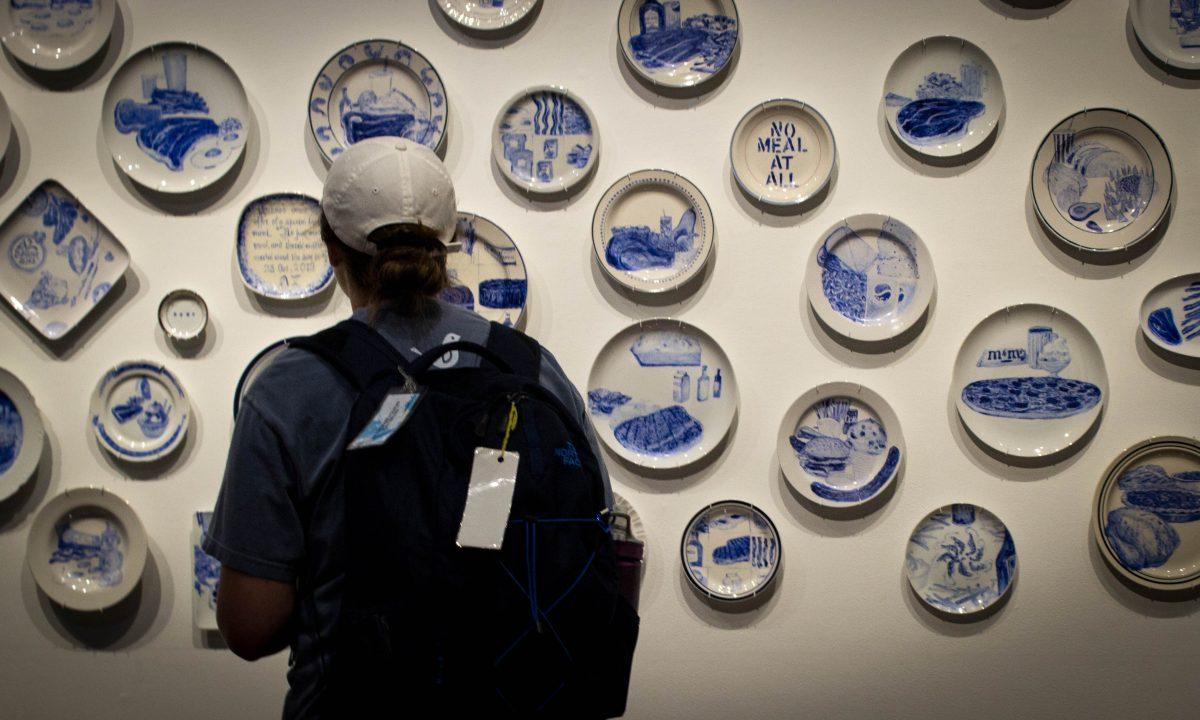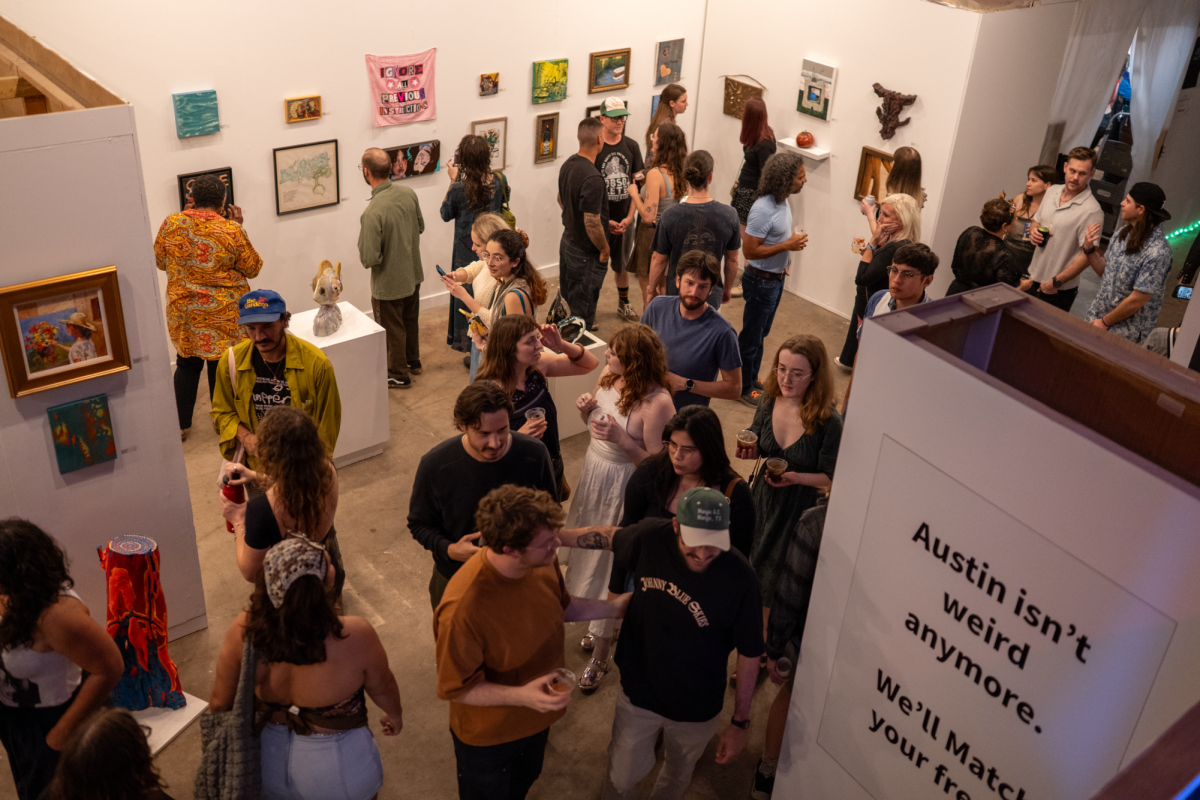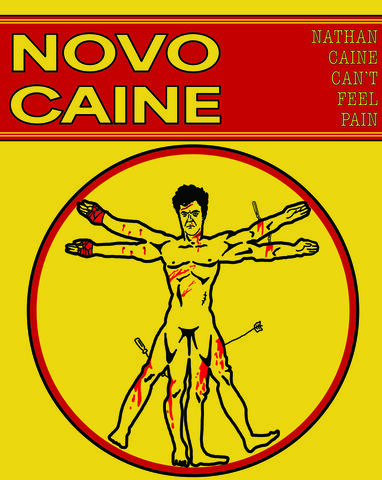July 8, 1999, Oklahoma: six tacos, six doughnuts and a cherry Coke.
Julie Green, painter and art professor at Oregon State University, read this last meal request in a local newspaper almost 20 years ago. After seeing it, Green was inspired to begin a project illustrating the last meal requests of inmates on death row.
Seven hundred inmates’ last meals are painted on white and blue ceramic plates lining the walls of the gallery. The plates are ordered first by state name, then chronologically. The ambience is enhanced by a video on loop of Green showing individual plates while reading off that inmate’s meal request and date of execution.
The exhibition is titled, “The Last Supper: 700 Plates Illustrating Final Meals of U.S. Death Row Inmates” and is on display until Nov. 10 at the Texas State Galleries in the Joann Cole Mitte building.
Green was raised in a what she calls a conservative family in favor of capital punishment, but changed her position at age 21 after learning more about the legal system and its margin for error in college.
Initially a personal meditative way of understanding, Green’s art piece grew into a larger project in hopes it would create a space for conversation and awareness about the complexities of capital punishment and our judicial system.
The exhibition gives onlookers multiple entry points to talk about capital punishment, from food or traditions to where viewers locate meaning in things.
“A final meal represents an individual,” Green said. “A lot of suffering surrounds each plate.”
The intimacy of a last meal request can be seen by how the plates lend insight into the region, race and economic background of the inmate.
Mark Menjivar, assistant professor of art foundations, brought the exhibition to the attention of the Director of the Texas State Galleries, Margo Handwerker, after being drawn to it because of the influential power and scale of the project.
“Each plate is like a small story,” Menjivar said. “It opens up our imagination to think about the realities of death row and execution, but also the crimes that led the prisoners there.”
Handwerker curated the exhibition due to its direct connection to this year’s Common Experience theme, The Search for Justice: Our Response to Crime in the 21st Century.
The exhibition has particular resonance in Texas, as it carries out the largest number, 542, of executions since 1976 according to the exhibit. Texas is also the only state that does not allow a final meal selection, serving only the standard prison fare of the day.
As an attempt to generate conversation, Green has provided a comment book for visitors and encourages everyone to engage in dialogue with one another. The galleries will also be hosting programs and conversations that touch on the exhibition’s content and the broader Common Experience theme.
Green intends to paint 50 plates a year, until the death penalty is abolished in the United States.
Categories:
Students can view the final meals of 700 former death row inmates
September 27, 2017
Carson Ingram, social work freshman, observes “The Last Supper” exhibition Sep. 18 at the Joann Cole Mitte Gallery on campus. The work is on display until November 10.
Photo by Josh Mends | Staff Photographer
0
Donate to The University Star
Your donation will support the student journalists of Texas State University. Your contribution will allow us to purchase equipment and cover our annual website hosting costs.
More to Discover









